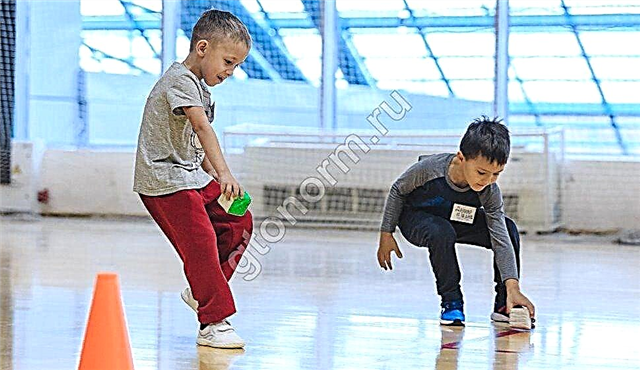Considering crossfit and other areas of modern fitness, one cannot but touch on the topic of circuit training, which is basic for many sports. What is it and how does it help beginners and professional athletes? Let's consider further.
General information
Circuit training has been widely used almost from the very inception of non-core sports disciplines. However, it received a systematic justification with the development of weightlifting fitness directions.
In particular, Joe Weider is considered one of the key figures in the formation of circuit training, who created his own split system as opposed to unsystematic training. However, due to opposition, he created the basic theoretical system of substantiation of circuit training, the principles on which it is based today.
Circuit training for all muscle groups, according to Weider's definition, is a high-intensity training method that should engage all muscle groups and become maximum stress for the athlete's body, which will stimulate his body to further transformations.
Principles
Circuit training for all muscle groups implies compliance with certain principles that distinguish it from other types of training:
- Maximum stress load. Maximum stress - stimulates the body to recover more intensively, which allows you to achieve certain results much faster. However, in the beginning, you shouldn't do every exercise to failure.
- High intensity of training. It allows you to develop not only muscle strength, but also related energy systems (for example, the work of the cardiovascular system). There is no break between exercises in the circle or the minimum is 20-30 seconds. Rest 1.5-2 minutes between circles. The number of circles is 2-6.
- Small time spent. The short training time makes it affordable for most athletes. As a rule, such a lesson fits into 30-60 minutes (depending on the number of laps).
- The presence of a rigid specialization. The principles of the development of circuit training imply only the load on all muscle groups. The type of load determines the factor of specialization of the main sport.
- Full body workout in one workout. Usually, one exercise is allocated for each muscle group. At the same time, the order of their elaboration changes from training to training. For example, on the first day, you start with chest exercises, on the second day, from the back, and so on.
- The intensity of the load on different muscle groups is determined by their size and susceptibility to stress. Basic exercises should be used predominantly.
In bodybuilding and fitness, circuit training is used by beginners who find it difficult to immediately perform heavy multi-joint exercises with free weight, and during the drying phase. Gaining mass based only on circuit training will not be effective. At this stage, the use of such a system is advisable only within the framework of the periodization of loads.
Varieties
Like CrossFit, circuit training is only a training design method that does not determine the further profiling of an athlete. The foundation laid down in the basic principles of such training allows you to create variability in accordance with the needs of the athlete: from classic training, which is used in all areas related to weightlifting (bodybuilding, powerlifting, etc.), to combined athletics training with emphasis to develop functional capabilities (Tabata, crossfit, etc.).
Let's take a closer look at the main options for circuit training in the table:
| Training type | Feature | Method of conducting |
| Basic circular | Maximum development of strength indicators due to the exclusion of non-profiled exercises. | Only basic multi-joint exercises are used. |
| Bodybuilding circular | Maximum harmonious development of the body. Use by beginners as a foundation preparation for the transition to split and by more experienced dryers. | In contrast to the basic circular, isolation exercises can be added if necessary. During the drying phase, cardio can be added. |
| Circular in Crossfit | Maximum development of functional strength due to the specifics of the exercise. | Combining the principles of weightlifting and athletics implies the development of functional strength and endurance. |
| Athletics | Maximum development of speed indicators. | Training involves basic development of all muscle groups with the creation of adjustments for specialization. |
| Tabata Protocol | Maximum intensity combined with minimum training time. | The principle of training continuity and the creation of a suitable intensity due to the formation of strict time control in conjunction with tracking the pulse is observed. |
You need to understand that these types are presented solely as an example, since absolutely any type of exercise can be built on the principles of basic circuit training. For example, workout or boxing training, each of which has a combined nature and allows you to combine the principles of Tabata and athletics, or powerlifting and crossfit.
Long-term specialization
Considering the exercises for circuit training and the principle of its construction, it can be noted that it is never used by athletes throughout the year. It makes sense for beginners to study on such a system for 2-4 months. Experienced dryers can use circular exercises for 2-3 months. At the recruitment stage, it will be rational to set one week of circuit training every 4-6 weeks as part of the periodization of loads.
It is constantly ineffective to use circuit training, since the body gets used to this type of load, which reduces the effectiveness of the training.
Always running program
For those looking for the perfect workout routine, here's an example of a circuit workout that's perfect for experienced athletes and beginners with at least minimal experience with iron:
| Monday | ||
| Incline Bench Press | 1x10-15 |  © Makatserchyk - stock.adobe.com |
| One-handed dumbbell row | 1x10-15 |  |
| Leg press in the simulator | 1x10-15 |  |
| Lying leg curls in the simulator | 1x10-15 |  © Makatserchyk - stock.adobe.com |
| Seated Dumbbell Press | 1x10-15 |  © Makatserchyk - stock.adobe.com |
| Standing barbell curls | 1x10-15 |  © Makatserchyk - stock.adobe.com |
| French bench press | 1x10-15 |  |
| Wednesday | ||
| Wide grip pull-ups | 1x10-15 |  |
| Dumbbell bench press | 1x10-15 |  |
| Leg extension in the simulator | 1x10-15 |  © Makatserchyk - stock.adobe.com |
| Romanian barbell deadlift | 1x10-15 |  |
| Wide grip barbell pull | 1x10-15 |  © Makatserchyk - stock.adobe.com |
| Dumbbell curls sitting on an incline bench | 1x10-15 |  © Makatserchyk - stock.adobe.com |
| Extension on the block for triceps | 1x10-15 |  © blackday - stock.adobe.com |
| Friday | ||
| Barbell Shoulder Squats | 1x10-15 |  © Vitaly Sova - stock.adobe.com |
| Romanian Dumbbell Deadlift | 1x10-15 |  |
| Dips on the uneven bars | 1x10-15 |  |
| Row of the bar in an incline to the belt | 1x10-15 |  © Makatserchyk - stock.adobe.com |
| Press with a narrow grip | 1x10-15 |  |
| Scott Bench Curls | 1x10-15 |  © Denys Kurbatov - stock.adobe.com |
| Seated Arnold Press | 1x10-15 |  |
In total, you need to perform 3-6 such circles, the first of which is a warm-up. Rest between exercises - 20-30 seconds, between circles - 2-3 minutes. In the future, you can increase the intensity of the workout by increasing the number of circles, working weights and reducing the time for rest. In total, the program implies its implementation within 2-3 months, after which it is better to switch to a classic split.
Note: division by days of the week remains arbitrary and implies adjustment to your own training schedule. You don't need to do this more than 3 times a week.
The main advantages of this approach to training include:
- Lack of specialization in certain muscle groups. This allows the athlete's body to be prepared for the loads in any specialization in the future.
- Versatility. The weight on the apparatus is determined by the fitness of the athlete.
- Short training time. Unlike other sports, the canonical circuit training can be done in 30-60 minutes.
- The ability to create adjustments and replace exercises with analogues in accordance with individual preferences.
Circular vs crossfit
Crossfit, as a direction of fitness, grew on the basis of precisely the principles of circuit training, followed by an emphasis on the development of functional strength. Despite the large number of athletics, gymnastic and coordination exercises in the Crossfit Games competition program, it can be noted that the prize places are always taken by athletes with a major specialization in heavy exercises.
Let's consider whether CrossFit is a logical continuation of the principles of building circuit training, whether it includes them or completely opposes them:
| Circular training | Canonical crossfit |
| The presence of a constant progression. | Lack of profiling progression. The load is determined by Wod. |
| Progression is determined by weight, reps, laps, rest time. | Likewise. |
| Using the same exercises for a 1-2 month cycle to optimize results. | Greater variety, allowing you to develop a profiling load by constantly shocking all muscle groups. |
| The ability to vary the exercises to suit the requirements. | Likewise. |
| Extremely short time of the training process. | The variability of training time allows you to develop different energy systems in the body, maximizing the amount of glycogen and oxygen sensitivity of the muscles. |
| The lack of rigid specialization allows you to perform all tasks. Including the development of strength, endurance, fat burning, improving heart function. The only limitation is that program compliance is determined by the training period. | Complete lack of specialization, which allows you to achieve the development of the functional capabilities of the body. |
| Suitable for athletes of all fitness levels. | Likewise. |
| A coach is required to control the result and technique of the exercises. | Likewise. |
| A heart rate monitor is needed to prevent athletic heart syndrome. | Likewise. |
| Relatively safe training method. | Quite a traumatic sport that requires more control over technique, heart rate, and timing in order to minimize risks to the body. |
| There is no need to train in a group. | The greatest efficiency is achieved precisely in group training. |
Based on all of the above, we can conclude that CrossFit combines the principles of circuit training, organically processing them in conjunction with other basic principles of fitness to achieve optimal results.
Circuit training is great as a pre-workout for CrossFit, or it fits seamlessly as one of the WOD programs performed throughout the week.
To summarize
Knowing what a full body circuit training is, and understanding the principles of building a training, you can adjust the training program to suit your needs. The main thing is to remember a few rules regarding the circuit training complex for CrossFit training:
- Using periodization to avoid stagnation.
- Constantly changing profiling exercises (while maintaining load balancing).
- Saving the intensity level and training time.









